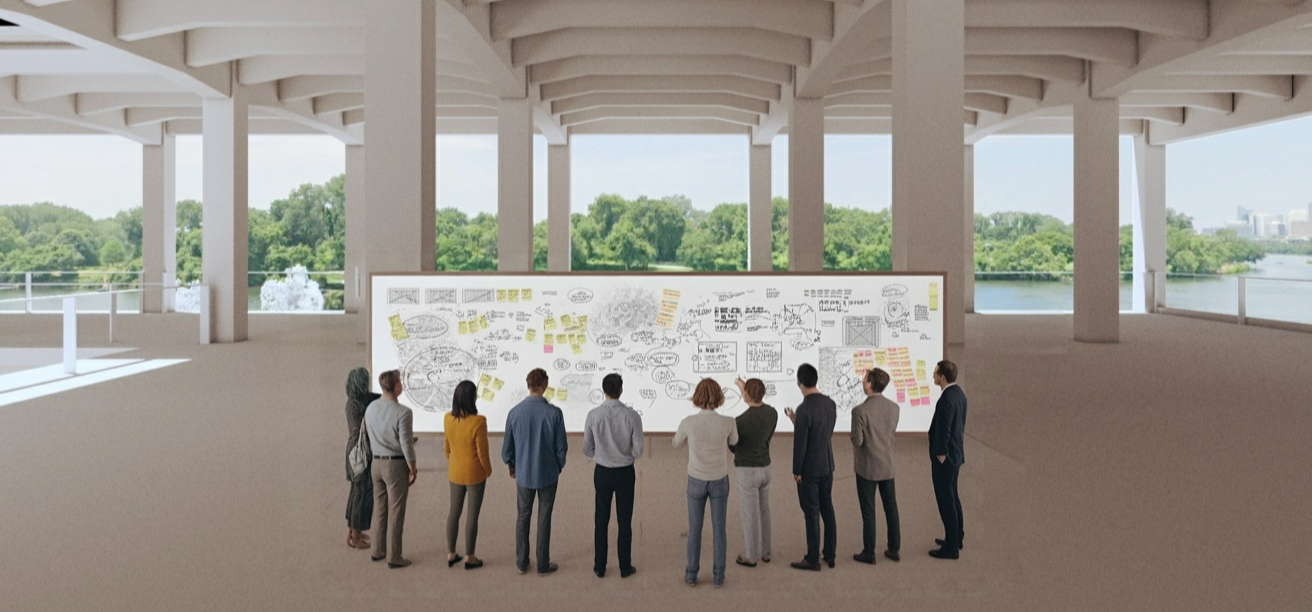From Silos to Systems: How We Evolve When the Old Structures Disappear
“52,000 layoffs this year. NIH defunded. AI replaces an entire department overnight.”
I talked to a founder last week who said, “I built everything right. And it still feels like it’s falling apart.”
He’s not alone. Something massive is shifting—and fast.
We’re not just witnessing an evolution of work. We’re living through the dissolution of entire operating systems—economic, technological, organizational, and psychological. And the biggest question emerging isn't just "How do we scale?"
It’s this:
How do we evolve—individually and collectively—without losing ourselves in the process?
The Five Phases of Organizational Evolution
Today’s organizations live somewhere along a full arc of identity:
1. The Proto-Founder
Emergent Self
Solo tinkerer. No roadmap. Raw potential.
Risk: Overwhelm, obscurity
Need: Visibility, validation, soft container
Modern Ancients provides early scaffolding so they can test identity before locking into it.
2. The Hyper-Individualized Founder
Sovereign Self
AI-powered builder. Highly autonomous.
Risk: Bottlenecking, isolation, identity exhaustion
Need: Systems that scale trust, not just output
Modern Ancients helps founders stop over-functioning and start designing with others.
3. The Midsize Org in Flux
Becoming a Collective
Scaling fast. Culture thinning. Power shifting.
Risk: Role confusion, founder myth collapse
Need: Strategic memory, shared intelligence
Modern Ancients aligns identity and operations before growth eats the soul.
4. The Mature Enterprise
Stewardship Phase
Large-scale delivery. Risk-managed operations.
Risk: Stagnation, disengagement, mission drift
Need: Internal innovation and narrative re-infusion
Modern Ancients reactivates purpose, building systems that evolve from the inside.
5. The Legacy Institution
Archival Mind
Generational system. Institutional memory.
Risk: Fossilization, irrelevance
Need: Translation of legacy into living relevance
Modern Ancients helps them metabolize the past into future stewardship.
Economic Reality Check: The Collapse Beneath the Surface
This isn’t theory. This is happening:
Federal Defunding: $900B in proposed cuts include $715B from Medicaid; NIH has already slashed $1.81B in medical research—jeopardizing public health and equity-based science.
Tech Layoffs: Over 150,000 workers cut in 2024. Another 52,000+ this year (Meta, Google, Microsoft, Dell, Amazon).
AI Displacement: 14% of the global workforce impacted. Up to 375 million people will need to shift careers by 2030.
CEO Outlook: 1 in 4 CEOs believe AI will cut 5%+ of their current workforce.
This isn’t a market cycle. It’s a new landscape.
We are no longer building inside old systems—we’re building after them.
The Real Crisis: Who Gets to Create Value?
In every organization we work with, the same shadow creeps in:
“Only leadership can innovate.”
“Junior staff just executes.”
“That’s above your paygrade.”
Meanwhile, breakthroughs are happening on the edges:
A community manager sees a gap no one else does.
A junior dev. prototypes a new product in secret.
A part-time consultant builds a model that outperforms the C-suite.
The real opportunity—and the real risk—is this:
Organizations that don’t democratize value creation will die of self-blindness.
Modern Ancients designs for emergence.
We build ecosystems where:
Proof-of-concept can come from anywhere
Intelligence flows across roles, not just up
People grow with the organization—not in spite of it
What We Actually Need: Cultures Where Letting Go Is Safe
To evolve, we all have to let go:
Of over-identified roles
Of outdated success scripts
Of controlling what no longer needs us
But most workplaces aren't built for that.
They say they want change—but punish it when it shows up.
We need new rituals.
New relational systems.
New agreements.
Not just HR policies—but cultural scaffolding that says:
“You’re safe to become someone new here.”
This is how you build a workplace where people want to stay.
Because it’s where they’re allowed to evolve.
And — What If Losing Ourselves (With The Securities In Place to Do So Effectively) Is Actually the Point?
We often fear that if we change too much, we’ll lose who we are.
But what if losing the smaller self—the ego, the title, the illusion—is the key?
The founder who lets go becomes the ecosystem designer
The overlooked junior becomes the catalyst of a new department
The old institution becomes a steward of a future it once couldn’t see
These aren’t collapses.
They’re initiatory thresholds.
And they need to be designed for.
Modern Ancients builds those designs, together with you, our partners.
From Fragmentation to Flow
The future doesn’t belong to the biggest or fastest.
It belongs to the organizations that know how to:
Listen at the edges
Share value across the whole
Let go of what’s dying and trust what’s becoming
Because in the end, organizations aren’t made of charts and roles.
They’re made of people.
And people evolve.
If You’re Here, You Already Know Something’s Changing
So ask yourself:
Are you bottlenecking your own brilliance?
Is your team burning out while scaling up?
Are you managing legacy—or transforming it?
If yes—let’s talk.
Modern Ancients exists to help you build the system that holds your evolution.
We don't just scale operations.
We design for transformation.
Your next version is waiting.







